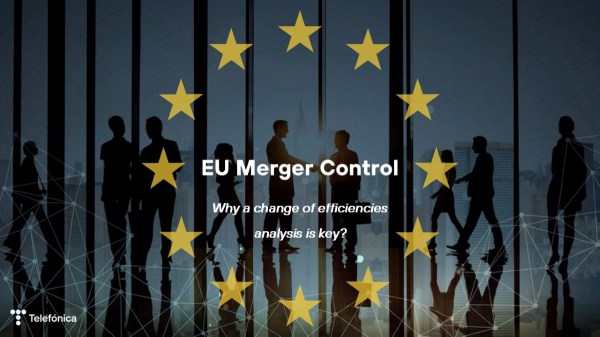In our last post, we argued how rebuilding the business case in Europe is key, looking at the interplay between competition policy, regulatory approach, competitiveness, innovation, and consumer welfare to find a new deal that better serves people, businesses, and the wider economy as a whole.
Telefónica and other European operators shared their views on competition, competitiveness, and regulatory approach at the MWC24 Barcelona, based on their experience in the region. The telecoms sector is a key sector providing services beyond basic connectivity, but the state of digital communications is weak, and the market remains uniquely fragmented in Europe, undermining the competitiveness and sustainability of the sector and leading to poorer outcomes for citizens’ welfare.
The transatlantic technology gap is undeniable. Below are some figures, based on ETNO’s State of Digital communications 2024 report, in the form of questions and answers on the connectivity gap between the US and Europe, which respond to some inaccurate claims made on the subject.
Does the US invest more per subscriber than Europe?
The United States outpaces Europe in terms of investment per subscriber (per capita): Europe trails with €109/year compared to the US’s €240/year. Declining revenues are exerting pressure on telecom investments in Europe. European telecom companies allocate a higher proportion of their revenues to investment (above 20% in Europe), which is becoming unsustainable due to the downward trend in revenues and returns on investments, alongside the increasing investment requirements to meet connectivity goals.
This situation adversely affects both consumer and producer welfare. Consequently, European operators’ investment capabilities, measured in investment per capita, are being affected, and this disparity shows no signs of narrowing.
Is the connectivity in the US or the security of the service better than in Europe?
Connectivity performance is better in the US than in Europe. Gigabit-capable access networks cover 79.4% of Europeans. The goal is to reach full coverage in 2030, however Europe remains behind its regional peers (e.g. US covers 89.6% of its population).
Europe’s 5G coverage (80%) is still far from its digital goal for 2030 (100% coverage) and is lower than all peers, in particular the US (98%).
As a result, average European downlink speeds (64 Mbps in mobile and 121 Mbps in fixed networks), although higher than the global average, are significantly lower than those in other regions, such as the US (97 Mbps in mobile; 214 Mbps in fixed networks).
Finally, 5G share of mobile connections has grown significantly in Europe recently but is dramatically lower than in other regions (17% in Europe vs 49% in the US in June 2023).
Are prices better for consumers in Europe than in the US?
European telecom operators have been absorbing inflation on behalf of their customers, with real telecom revenues declining steadily since 2016 and falling sharply in 2022 (-7.1% below the evolution of the consumer price index). According to ETNO, in general, Europe continues to register lower monthly per capita spending on telecoms (€36.7) in comparison to Japan (€54.9), South Korea (€42.4) and the USA (€90.3), and unlike these regions, the trend has been downward since 2008.
This has a dramatic impact on their ability to invest, the return on investment, the long-term sustainability of the sector in Europe and in the end citizen’s welfare, as shown above.
Is market capitalisation better in the US? Should it be boosted in Europe?
Total shareholder return (TSR), of which dividends are only a part, enables industries to attract capital for further investment. Investors make decisions based on TSR and risks. Across industries, the median 25-year TSR performance appears quite diverse, with telecom sector yielding an annualized return of approximately 8%, well below other sectors. And among developed markets, the US appears to be among the best performers, with an annualised average TSR of 7.6%, while Europe lags behind (e.g. UK or Germany 5%).
This, in turn, has a dramatic impact on the ability of European operators to invest and is the result of poor prospects and lack of return on investment above the WACC, jeopardising the long-term sustainability of the sector in Europe and, as shown above, people, businesses and economic prosperity.
The declining rate of return on invested capital of the telecommunications industry in Europe (from 9.1% in 2017 to 5.8% in 2022), as a consequence, among other reasons, of the regulatory and competitive landscape is incompatible with the vision of open strategic autonomy and the long-term sustainability of investment efforts that benefit European citizens, businesses, and society. As an example, DT divested its Dutch unit in favour of its US unit T-Mobile, reinforcing the German group’s transatlantic focus, while other undervalued European operators receive takeover bids from third countries.
Are cross-border acquisitions in Europe the answer to achieving a market structure similar to the US?
As argued in our previous post, before entering other European countries, operators need to be economically sustainable at home and have a sound business case for investing in other European markets.
Operators have high fixed costs and therefore market structures in each area have a greater influence on geographic expansion decisions than potential cross-border economies of scale. Finally, in addition to the lack of regulatory harmonisation in some areas, cultural differences and consumer preferences require nationally or locally adapted commercial strategies.
Recent cases of market consolidation in the sector without strong remedies (e.g. Brazil or the US) have not reduced the level of competition and, on the contrary, have benefited consumer welfare, people, companies and the economy as a whole.









